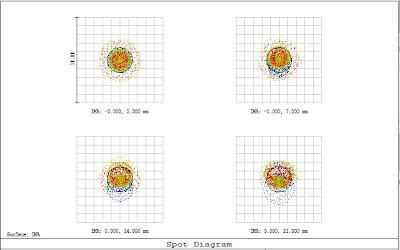Just to share a bit of the joy of developing and
building a new Astrograph. Don’t expect astronomical images yet, but one day
this new instrument will show it’s full capabilities. And you’ll be the first
to witness!
Let’s start with an empty tube… Well, not exactly
empty but the image shows that the inspector looks quite happy with it.
This image was taken early this year, when the optical design of the instrument was finished and the glass blanks had been ordered.
First a short introduction to this new Astrograph:
The idea was born around 5 'o clock in the morning somewhere in the spring of 2011. Two hours later the optical lay-out of this idea was entered in Zemax and optimization could be started. The optical design was finalized in November 2011. That seems to be a long time, and in fact it is, but all design activities took place between the regular activities, like my work at Astron, playing football with the kids, cleaning the house, mowing the lane, spending time with my wife, building a pipe-organ and god knows what else...
Now for some tech-talk:
The optical design is based on a Newtonian lay-out, with a spherical primary mirror, a field corrector near the focuser and a two-sided aspherical window. So, this instrument looks a bit like a Schmidt-Newton, but it really isn't. With an F/ratio of 2.5 it is an extreme fast system, with a corrected field of 50 mm diameter. Thanks to the special ED glass used for the field corrector and the unique interaction between this corrector and the optical window the instrument provides color free, diffraction limited images on a perfectly flat focal plane.
My next post will give a bit more information about the design and I'll present some ZEMAX generated spot diagrams.










